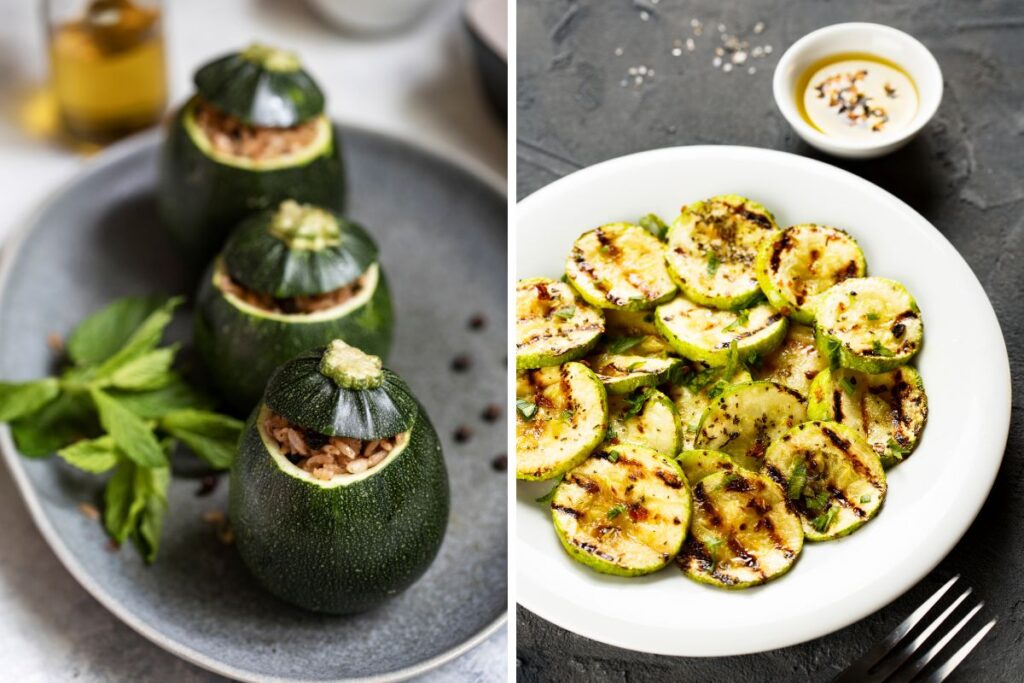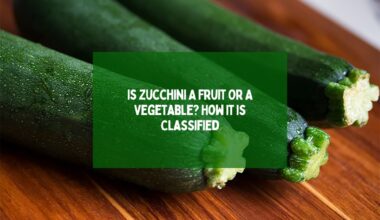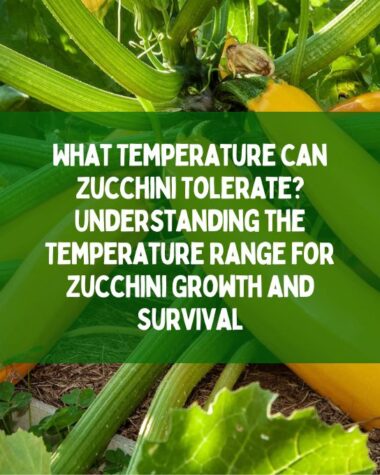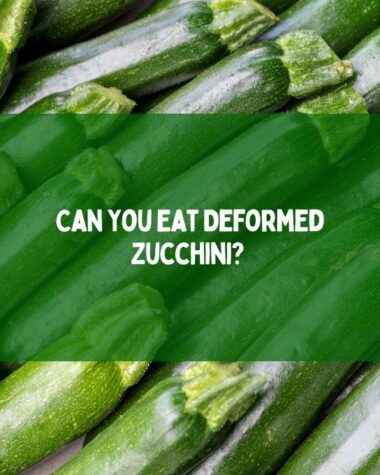Zucchini and courgette are two terms that are sometimes used interchangeably, but they actually have some small differences. These differences mainly come from their names and how they are used in different places. Knowing these differences can help us understand what sets zucchini and courgette apart.
Are you confused about the difference between zucchini and courgette? These two terms often create a stir in the culinary world, leaving people wondering if they refer to the same vegetable or if there’s a distinction between them.
In this article, we will unravel the mystery behind zucchini and courgette, exploring their origins, characteristics, and usage in various cuisines. So, let’s dive in and discover the nuances that set these two apart!
Distinguishing Features Between Zucchini and Courgette

When it comes to differentiating between zucchini and courgette, there are several notable distinctions to consider:
- Cultural Origins: The term “zucchini” has its roots in Italy, deriving from the Italian word “zucchino,” which translates to a small squash or immature marrow. On the other hand, “courgette” is a French term used to describe the same vegetable.
- Linguistic Usage: Zucchini is predominantly used in North American and Australian English, while courgette is more commonly employed in French, British, New Zealand, and South African English.
- Regional Preferences: Zucchini and courgette both refer to the same plant species; however, they are utilized to describe the vegetable at different stages of growth. While zucchini typically refers to the mature vegetable, courgette is used for the younger, smaller version.
- Size Discrepancy: In terms of size, courgettes are generally smaller, measuring around 14 x 4 cm in length. Conversely, zucchinis tend to grow larger, with some reaching sizes of 15-20 cm or more.
Zucchini and Courgette: A Linguistic Divide

The usage of the terms “zucchini” and “courgette” differs across various English-speaking regions. In North American and Australian English, the term “zucchini” prevails, while “courgette” is commonly used in French, British, New Zealand, and South African English. This linguistic divide reflects cultural and historical influences on language usage.
Summer Squash Family
Both zucchini and courgette belong to the cucurbit vegetable family, specifically the summer squash group (Cucurbita pepo). This vegetable family includes a variety of other squashes, such as pumpkins and gourds. Zucchini and courgette share the same botanical classification and exhibit similar characteristics.
Origin of the Names
The origin of the names “zucchini” and “courgette” sheds light on their etymology. The term “zucchini” originates from the Italian word “zucchino,” which translates to “a tiny squash” or “undeveloped marrow.”
This name reflects the vegetable’s early stage of growth when it is still small and tender. In contrast, “courgette” is of French origin and can be considered the French equivalent of the word “zucchini.”
The Color Spectrum
Zucchini and courgette exhibit a range of colors within their family. While the most common varieties are green, they can also appear in vibrant shades of yellow. The color difference primarily results from the cultivar and ripeness of the vegetable.
Both green and yellow varieties of zucchini and courgette are equally delicious and versatile in cooking.
Related Reading:
- Can You Eat Deformed Zucchini?
- A Complete Growing Guide for Zucchini Plant Care
- Best Zucchini Varieties To Grow In Containers
- 5 Reasons Why Zucchini Blossoms Fall Off: A Comprehensive Guide
Usage at Different Stages of Zucchini and Courgette Growth
Although zucchini and courgette refer to the same plant, their usage varies depending on the vegetable’s stage of growth. When the vegetable is still small, typically around 14 by 4 centimeters in length, it is commonly referred to as a courgette. This early stage of the vegetable is often cooked and served as a vegetable in various culinary dishes.
As the vegetable grows larger, reaching approximately 15-20 centimeters, it is more commonly called a zucchini. Zucchini is versatile and can be cooked in numerous ways or even consumed raw. Its larger size allows for different culinary preparations and applications.
Moreover, when the plant reaches maturity and attains its maximum size, it is sometimes referred to as a marrow. This designation indicates the plant’s full development and signals that it is now suitable for specific culinary uses.
Zucchini and Courgette: Culinary Applications

Zucchini and courgette are incredibly versatile vegetables that lend themselves to a wide range of culinary applications. Here are some notable ways in which these vegetables are utilized in the kitchen:
Sautéed and Stir-Fried Delights:
Zucchini and courgette can be sliced or diced and quickly sautéed or stir-fried with an assortment of vegetables, herbs, and spices. They add a fresh and vibrant element to stir-fries and can be paired with meats, tofu, or other plant-based proteins for a wholesome meal.
Pro tip: Add a dash of soy sauce, garlic, and ginger for an Asian-inspired twist or toss them with Mediterranean herbs like thyme, oregano, and rosemary for a fragrant and savory dish.
Grilled and Roasted Goodness:
These vegetables take on a delightful smoky flavor when grilled or roasted. Cut them into thick slices, brush them with olive oil, and place them on a preheated grill or in a hot oven until they develop charred marks and turn tender. Grilled zucchini and courgette make fantastic additions to salads, sandwiches, and antipasto platters.
Pro tip: Sprinkle them with a pinch of salt, black pepper, and a squeeze of lemon juice before grilling or roasting for a burst of tangy flavor.
Soups, Stews, and Casseroles:
Zucchini and courgette lend themselves well to hearty soups, stews, and casseroles. Their mild flavor and soft texture make them excellent additions to these comforting dishes. They absorb flavors from the broth or sauce, providing a delicious and nutritious element to the overall dish.
Pro tip: Add zucchini or courgette towards the end of the cooking process to maintain their texture and prevent them from becoming overly mushy.
Salads and Raw Preparations:
Zucchini and courgette can be enjoyed raw, adding a refreshing and crisp element to salads. They can be thinly sliced, julienned, or shaved into ribbons using a vegetable peeler. Incorporate them into mixed green salads, pasta salads, or grain bowls for an extra dose of freshness.
Pro tip: Combine zucchini or courgette with other raw vegetables like cucumbers, tomatoes, and bell peppers for a colorful and crunchy salad medley.
These are just a few examples of the culinary applications of zucchini and courgette. With their mild flavor, tender texture, and ability to adapt to various cooking methods, these vegetables are truly versatile ingredients that inspire culinary creativity in the kitchen.
Related Reading:







